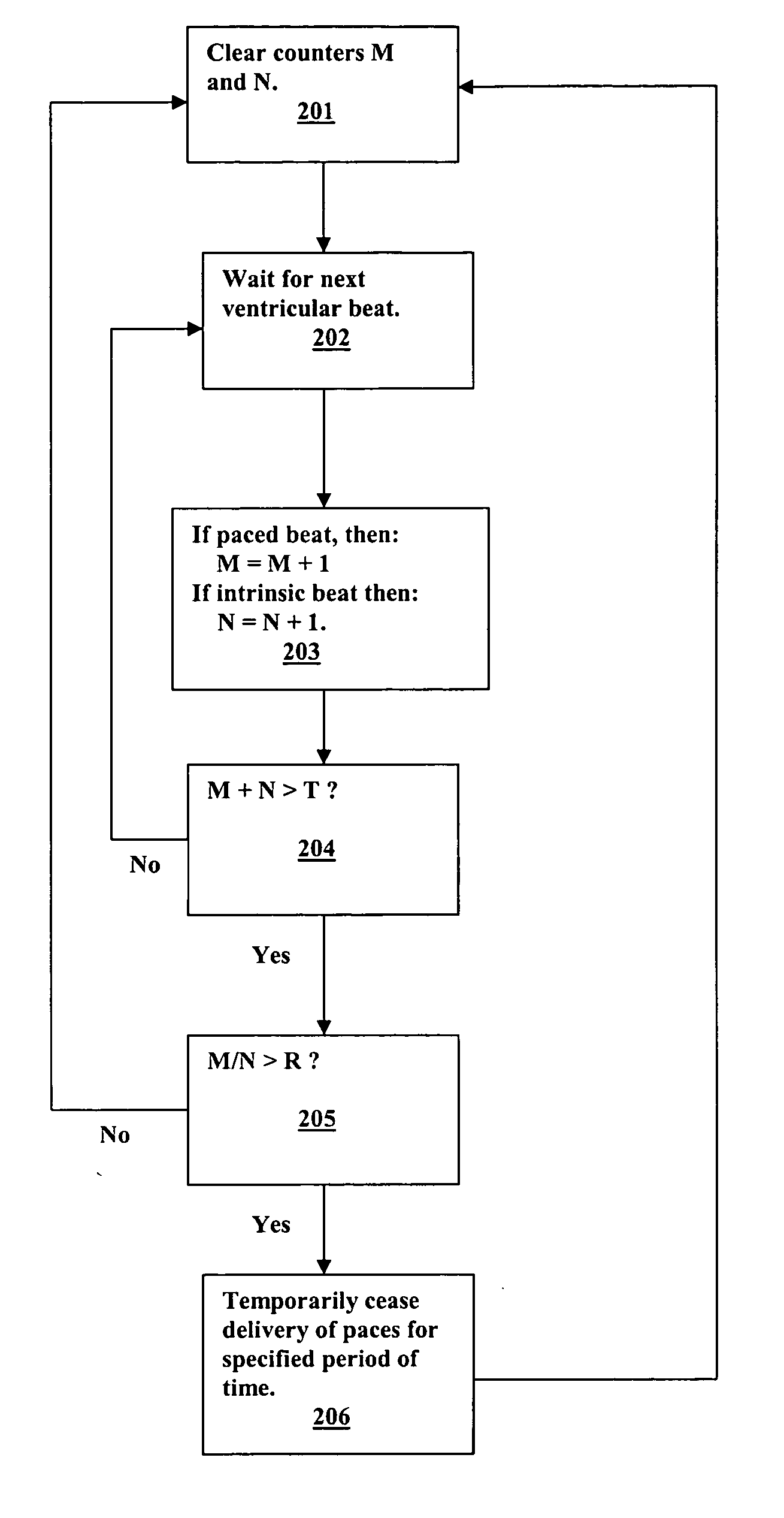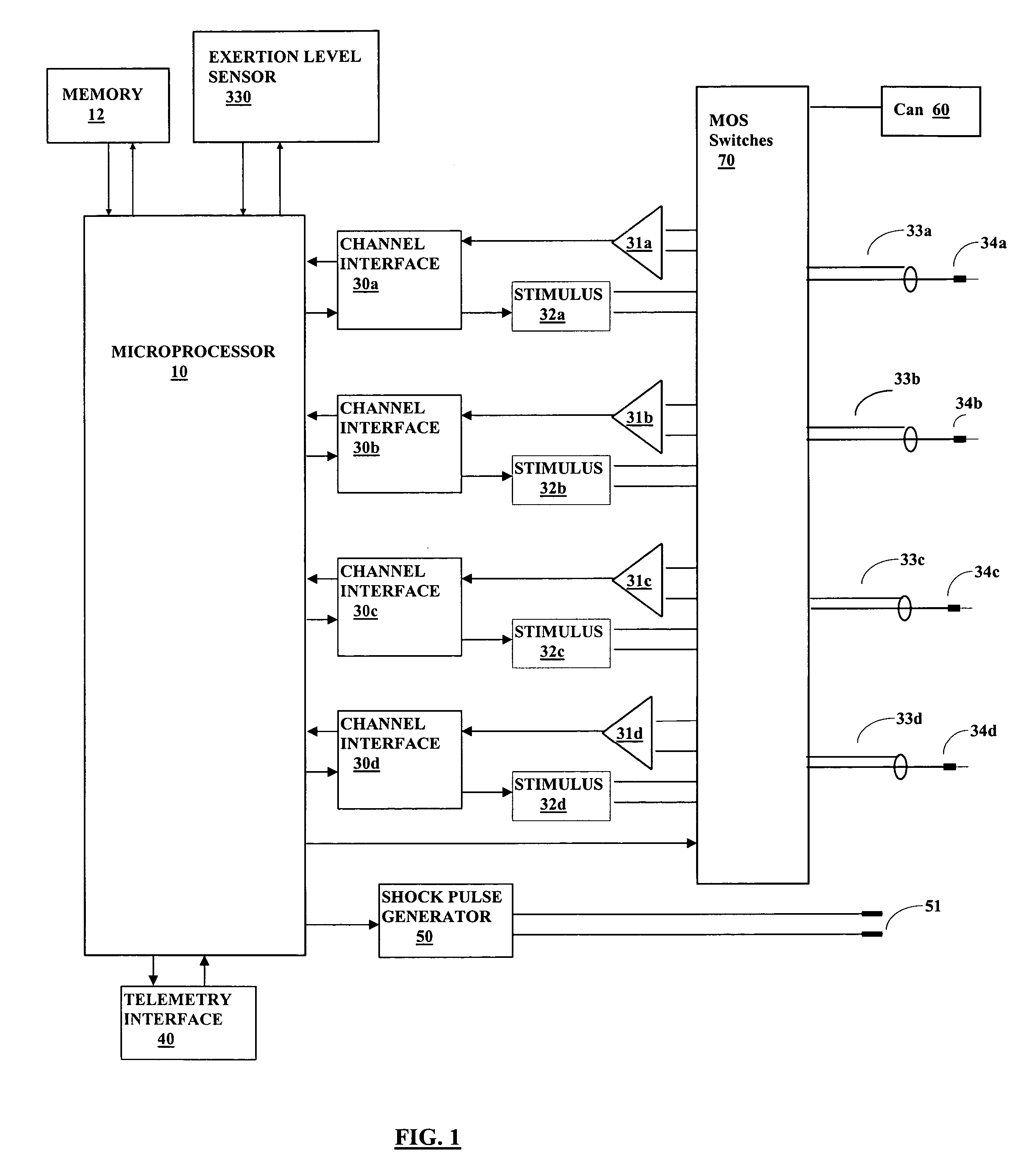Pacing method and device for preserving native conduction system
a technology of conduction system and pacing method, which is applied in the field of pacing method and device for preserving native conduction system, can solve the problems of inability to propagate electrical impulses, and inability to take advantage of the native conduction system of the heart. the effect of preventing atrophy, improving cardiac function, and preventing atrophy
- Summary
- Abstract
- Description
- Claims
- Application Information
AI Technical Summary
Benefits of technology
Problems solved by technology
Method used
Image
Examples
Embodiment Construction
[0008] As noted above, many patients now receive pacemakers for non-traditional indications (e.g., cardiac resynchronization therapy) where ventricular pacing is applied while all or part of the patient's native conduction system is intact. In these patients, one would like to pace the ventricle by a method that preserves the native conduction (His-Purkinje) system. What follows are descriptions of cardiac function therapy and an exemplary implantable device for delivering such therapy. Exemplary algorithms for promoting native conduction during the delivery of cardiac function therapy are then presented.
1. Cardiac Function Therapy
[0009] One example of electro-stimulatory therapy for the purpose of improving cardiac function is CRT. In ventricular resynchronization therapy, the ventricles are paced at more than one site in order to effect a spread of excitation that results in a more coordinated contraction and thereby overcome interventricular or intraventricular conduction defe...
PUM
 Login to View More
Login to View More Abstract
Description
Claims
Application Information
 Login to View More
Login to View More - R&D
- Intellectual Property
- Life Sciences
- Materials
- Tech Scout
- Unparalleled Data Quality
- Higher Quality Content
- 60% Fewer Hallucinations
Browse by: Latest US Patents, China's latest patents, Technical Efficacy Thesaurus, Application Domain, Technology Topic, Popular Technical Reports.
© 2025 PatSnap. All rights reserved.Legal|Privacy policy|Modern Slavery Act Transparency Statement|Sitemap|About US| Contact US: help@patsnap.com



